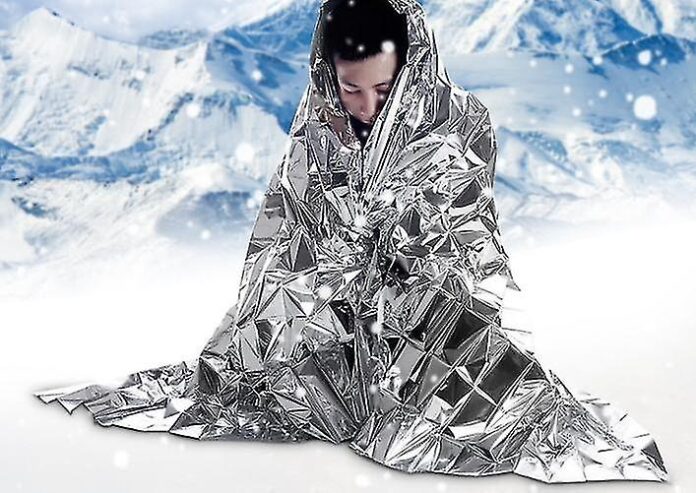Have you ever been to a marathon’s finish line? Did you ever wonder why the runners cover themselves in what appears to be thin sheets of aluminum foil as they cross the finish line? The athletes’ body temperatures tend to drop sharply once they stop running, and these blankets assist them in maintaining those temperatures.
However, the foil used in these sheets is different from the usual grocery shop foil. Space blankets are the conventional name for these foil sheets, which are a product of NASA technology. They provide warmth and are also referred to as solar blankets, mylar blankets, or emergency blankets. Everyone uses them, including astronauts, doctors, and mountaineers.
The Science behind Space Blanket
How can you stay warm with something so thin? Even though it seems corny, the technology is of the space age.
Aluminum vapor was applied to a very thin plastic layer by manufacturers to form the substance. The end product is a thin, flexible material that is thermally reflective, which means it reflects heat. Heat, which is simply infrared energy, is redirected by aluminum. Depending on how the blanket is manufactured, it can either reflect heat in (which controls body temperature) or away (NASA used it to cool down Skylab). Space blankets also referred to as a passive warming system, help the body retain that infrared energy.
Let’s concentrate on how space blankets function to provide warmth. To begin with, it’s important to comprehend how a body loses heat in the first place. Space blankets prevent heat loss by convection as well as evaporation. The exceedingly dangerous condition of hypothermia is brought on by excessive heat loss.
Uses of reflective space blanket
A great thing you may not know about reflective space blankets? It is incredibly versatile and is used in many ways. Here are some uses of space blankets in our everyday life.
For First aid use
Keeping a reflective space blanket in your first aid kit can provide a wealth of opportunities for the resourceful or trained. You should always have one with you as shelter from the weather. The following are some first-aid applications for mylar emergency blankets.
· As a tourniquet, use a few strips from a space blanket.
· Put a broken bone in a sling by using a space blanket.
· As a compression bandage, tie a strip of a space blanket around a wound.
· Utilizing numerous strips ripped from the emergency blanket, bind a splint.
It becomes obvious that they are worth more than their weight in your pack when you consider the weight savings you can achieve by bringing a simple reflective space blanket instead of a tourniquet, a sling, and an ace bandage.
Heat the Fire
To make your campground even cozier, construct a reflective barrier around your fire. On the side of the fire that is opposite from where you are lying, construct a wall out of the blanket. Remember not to place the blanket too closely and to position the shiny silver side to reflect the heat from the fire back toward you (it will melt).
Emergency Bivvy
Have you forgotten your spare sleeping bag or bivvy? No issue! The space Blanket may be transformed into a bivvy that you can slide into for all-night warmth using some well-placed duct tape.
Signaling Mirror
In the unlikely event that you forget your Rescue Flash Signal Mirror, your space Blanket is the next-best backup. To attract the attention of rescuers, reflect sunlight off the material’s silver reflecting surface.
For Pillow use
Although we can’t guarantee that it will be comfy, you can make your backcountry pillow in a rush by stuffing your space blanket into a stuff sack or other compact bag.
Reflective space blanket has a thoughtful design that effectively retains heat. The elastic bands caught you off guard, but they appear to do a great job of keeping the tubes open and preserving heat. This space blanket unquestionably traps heat more effectively and helps you in various ways to keep you warm.

























